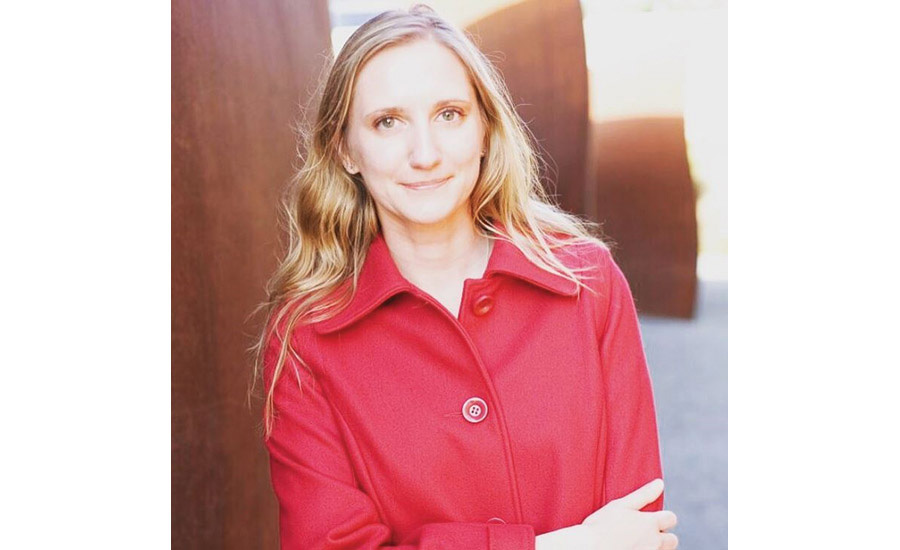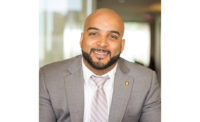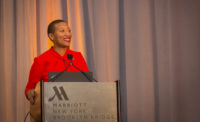According to the United Nations Environment Programme, the manufacture of building materials produces 11 percent of all global greenhouse gases. In November 2019, the Carbon Leadership Forum and a host of partner organizations launched the Embodied Carbon in Construction Calculator, or EC3—free, open-source software intended to help architects, engineers, and clients assess and reduce these up-front emissions. The tool is the brainchild of Stacy Smedley, who serves as director of sustainability for Skanska USA. The Seattle-based designer spoke with RECORD about her career and the origins of EC3.
You have a longstanding interest in sustainability, both personally and professionally. Walk me through your trajectory.
I grew up in Oregon on acres of land that my grandfather owned, and, when I was about 8, he sold it. I watched as the acreage that I loved was clearcut to make way for a housing development. I told my mom that when I grew up, I was going to design buildings that didn’t destroy nature. I went to architecture school at the University of Washington, always wanting to focus on sustainability, and worked in architecture for 10 years.
How did you end up with Skanska USA?
While I was with KMD Architects, a colleague and I convinced the firm to donate its time to design the Bertschi School Living Building Science Wing [the first Living Building Challenge (LBC)–certified project in the state of Washington and the fourth in the world]. Skanska was the contractor on the project, and we co-located in their office. I got a lens into what general contractors do and was inspired to ask for a job, to see if I could influence multiple projects at once. Designers specify products, but the contractors are the ones actually procuring those materials.
And around that time, you started a nonprofit to build temporary school buildings, right?
Yes, that was after Bertschi, which got me thinking about how to engage more kids. There are tons of portable classrooms out there, so I thought, “What if we tried to replace them with Living facilities that could teach and inspire kids to care about sustainability?” We have three in place nationally [in Seattle, Pittsburgh, and Washington, D.C.]. And the plans are out there, open-source to the world, for anyone who wants to build one.
Tell me about your current role.
As the director of sustainability, I focus on the Seattle market. It’s a pretty good place to be, because there’s such a focus here on sustainability. Also, I’m the national subject-matter expert when it comes to the LBC and embodied carbon.
How do you explain embodied carbon to people unfamiliar with the concept?
I try to make it simple. There’s operational carbon, which everyone understands—all the emissions from the energy the buildings consume. But embodied carbon is the emissions of everything up to turning on the light switch. It’s the extraction of raw materials, the transfer of those materials to a manufacturing facility, that facility’s emissions, the transport of materials to the site, the installation and the equipment it requires—all that is up-front embodied carbon. Then, there are the other stages: how many times those materials are replaced, and what happens to them when the buildings are demolished. So it is the whole life cycle of materials.
What gave you the idea for EC3?
I was brought on to help with carbon tracking for Skanska’s commercial development projects in Seattle, and I started to see how challenging it was to determine the emissions of materials. When you did find that information, it was typically at the end of a project. We were saying, “Here are the emissions we put out in the world based on our material choices.” We weren’t able to influence projects early enough to actually reduce carbon. I saw a gap there.
And the tool became a reality quite quickly.
Yes, in about 15 months. C-Change Labs came up with a proof of concept. We brought on structural engineer Don Davies of Magnusson Klemencic Associates, who has looked at embodied carbon for a long time. Then, the Carbon Leadership Forum and its director Kate Simonen took it to a place where we could get industry buy-in.
You’ve said that the tool isn’t perfect, but that there isn’t time to wait for perfection.
Early on [Architecture 2030 founder] Ed Mazria told Kate and me that when they issued the 2030 Challenge, he learned you just have to draw a line in the sand. It doesn’t matter if it’s perfect; you just need to start, and people will act. We’ve released a beta version of EC3; now we want input and feedback from the whole industry to make it better.





Post a comment to this article
Report Abusive Comment